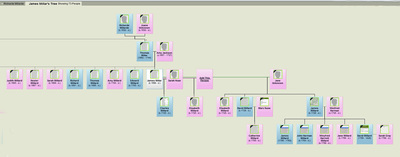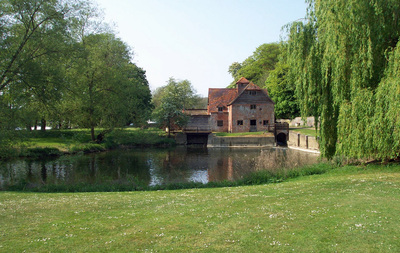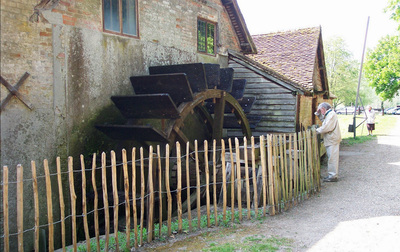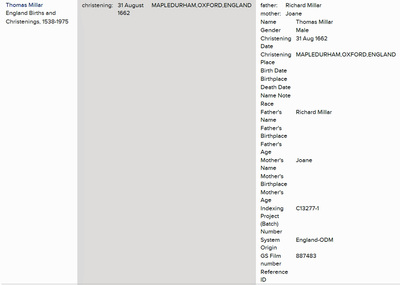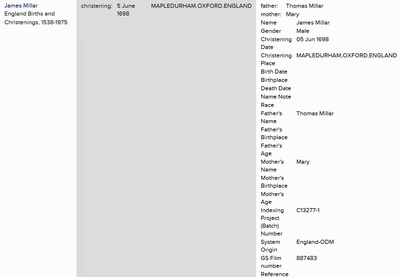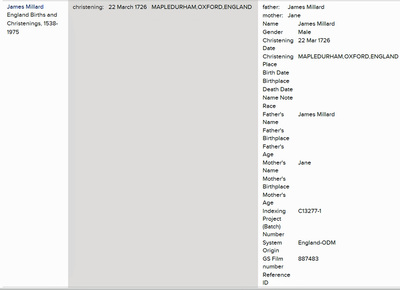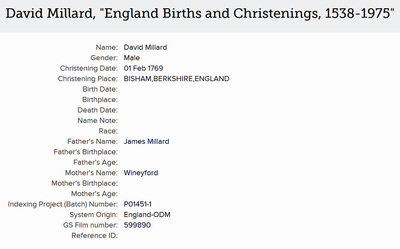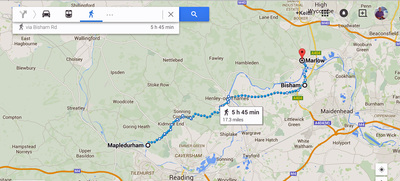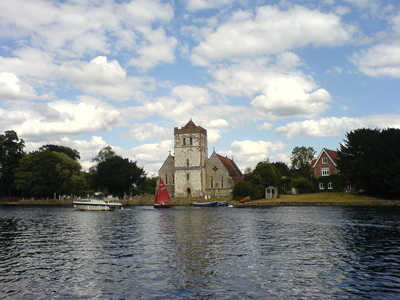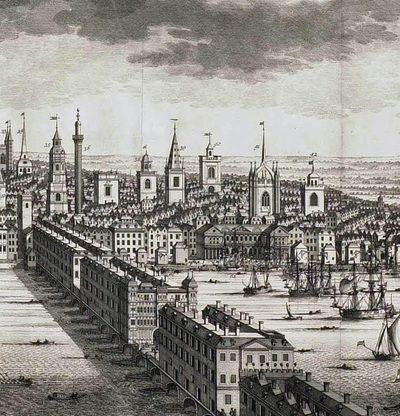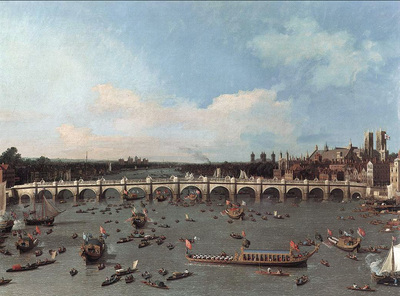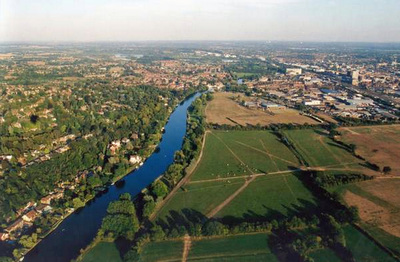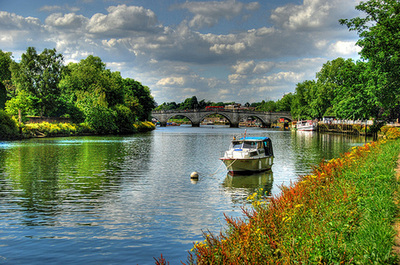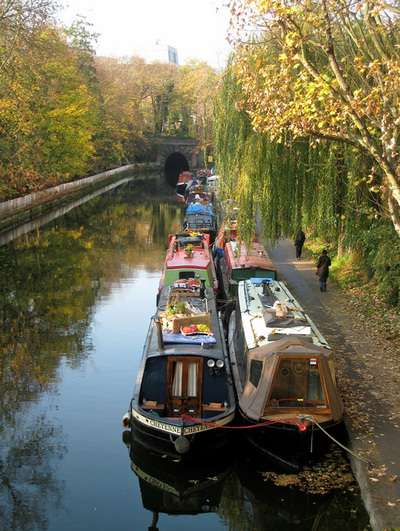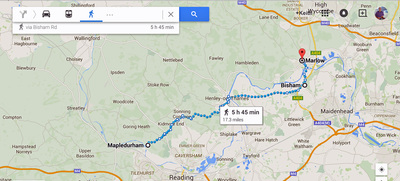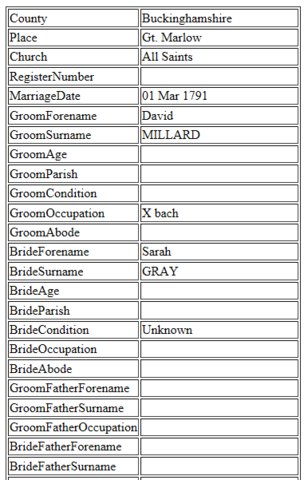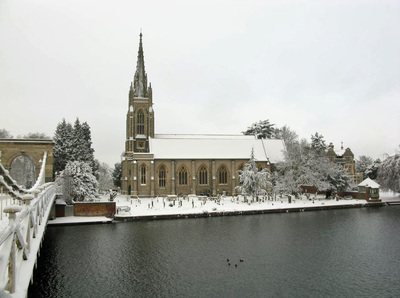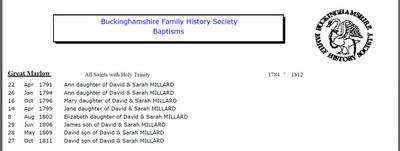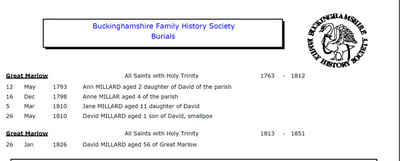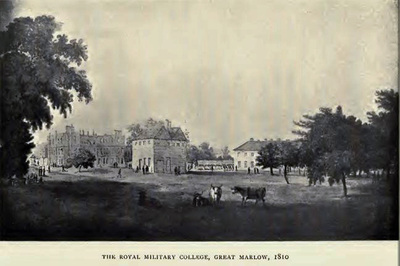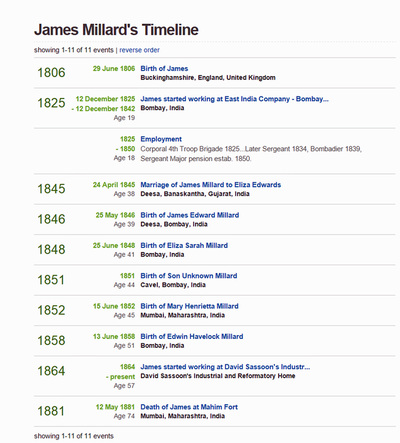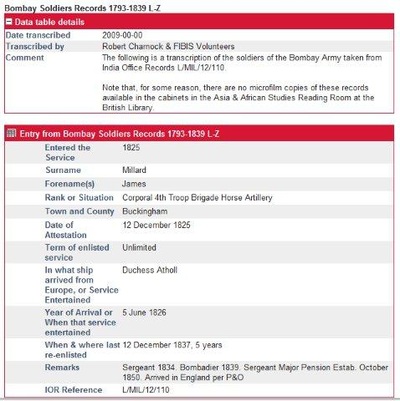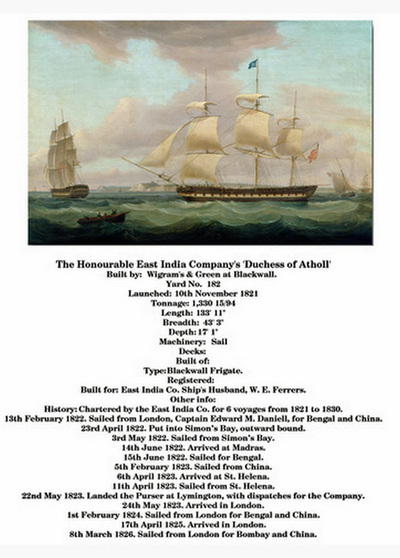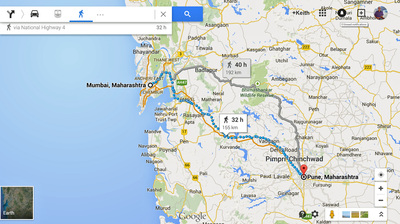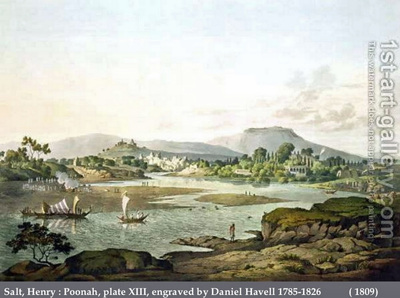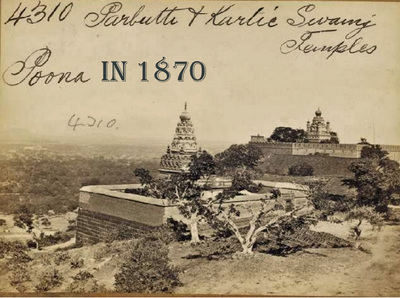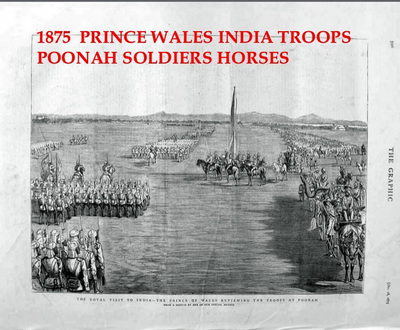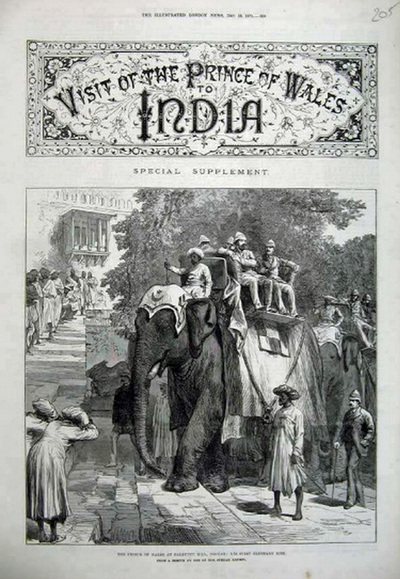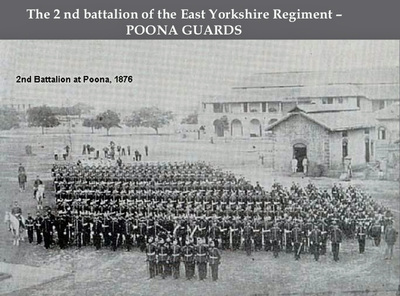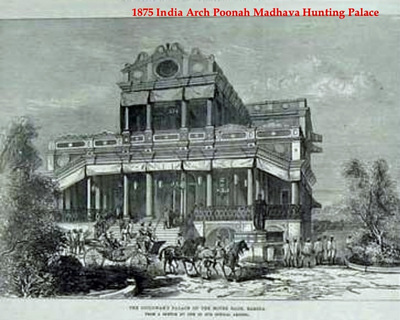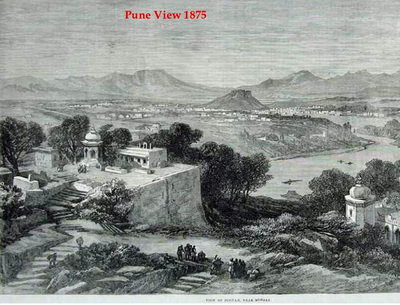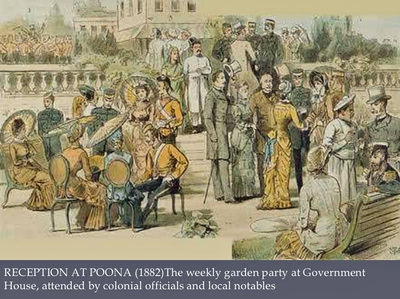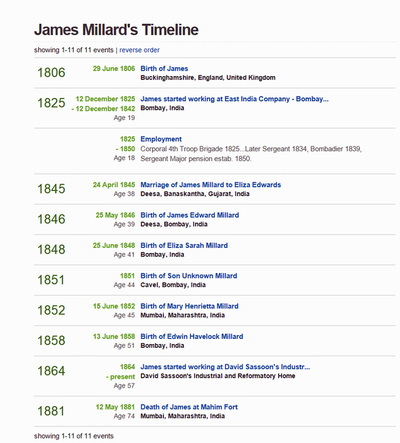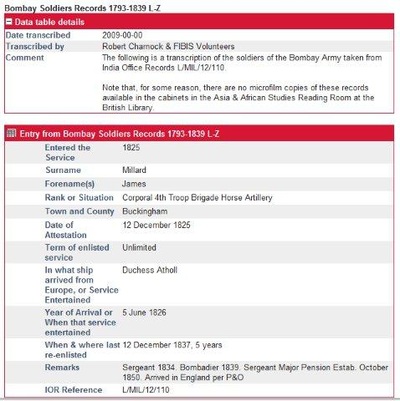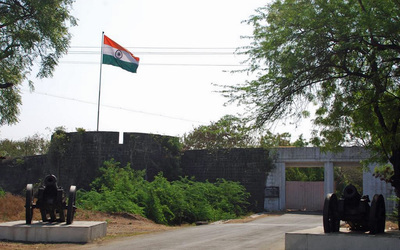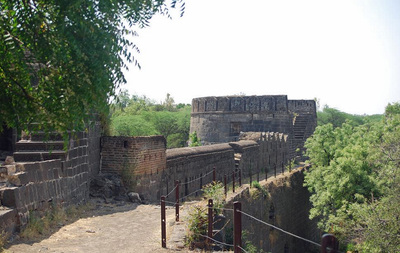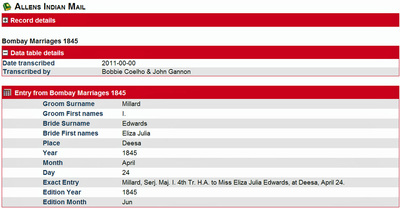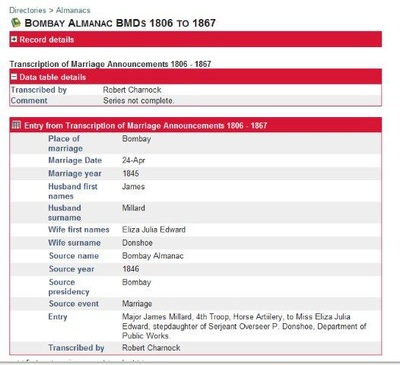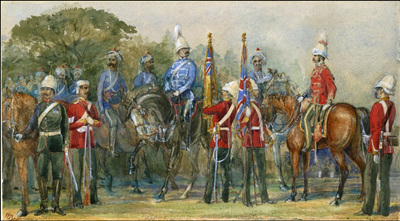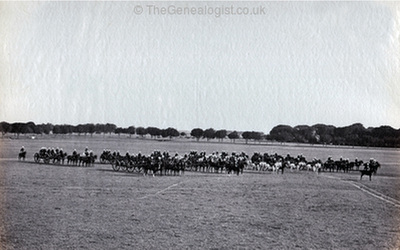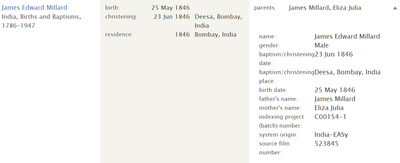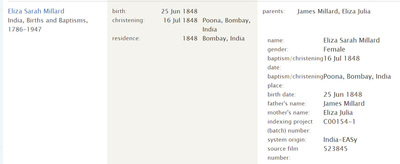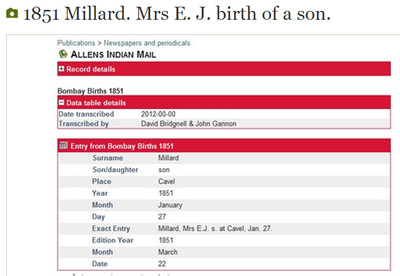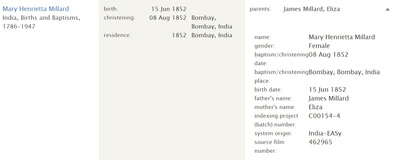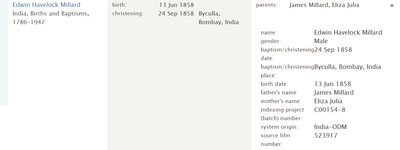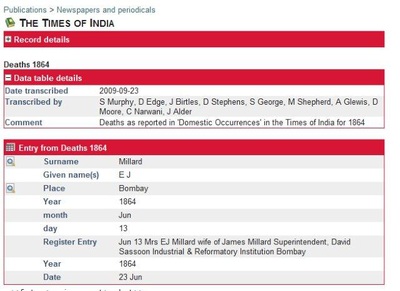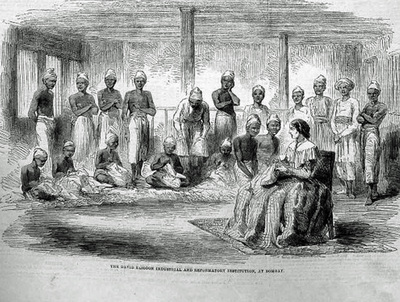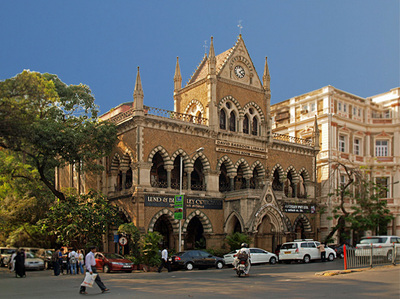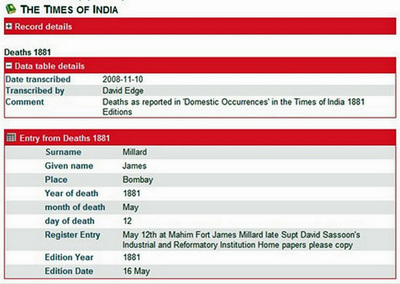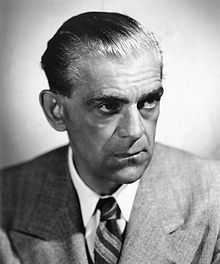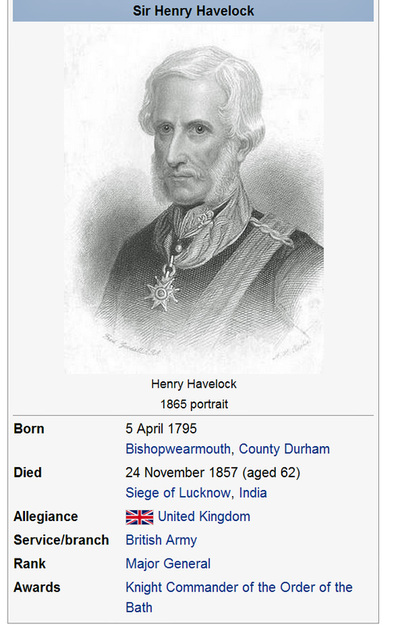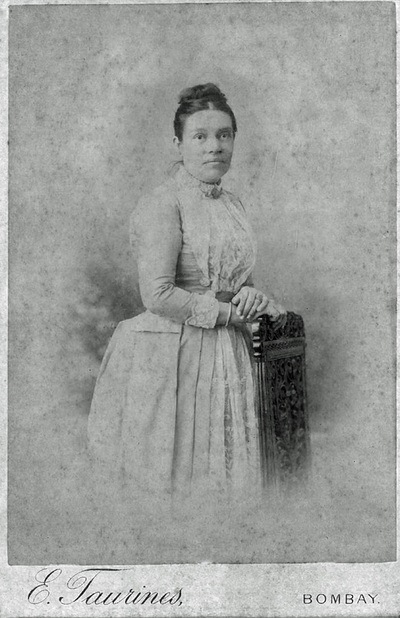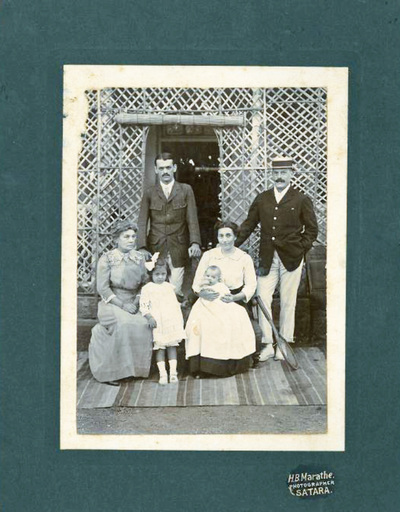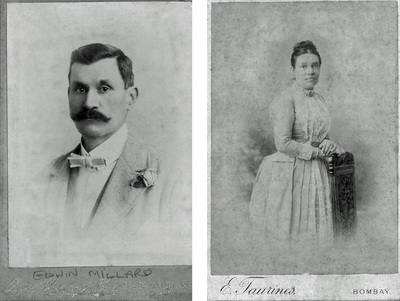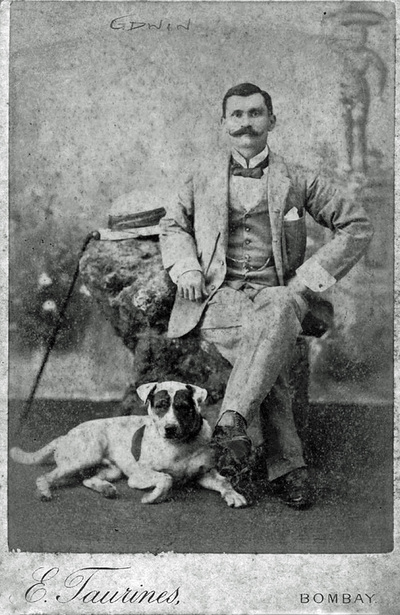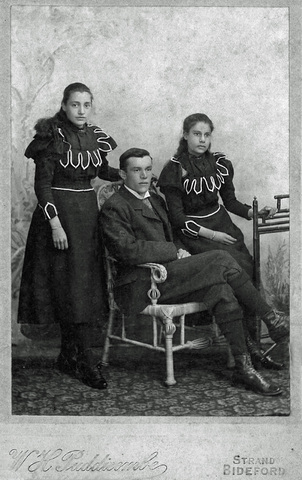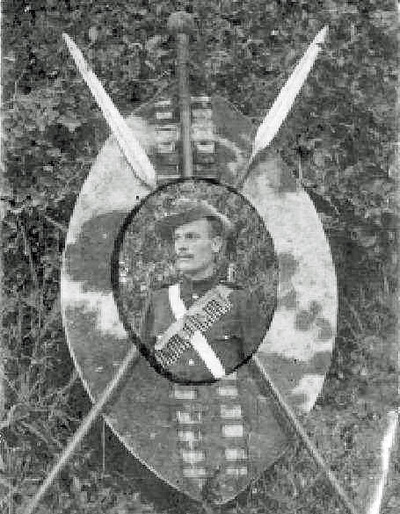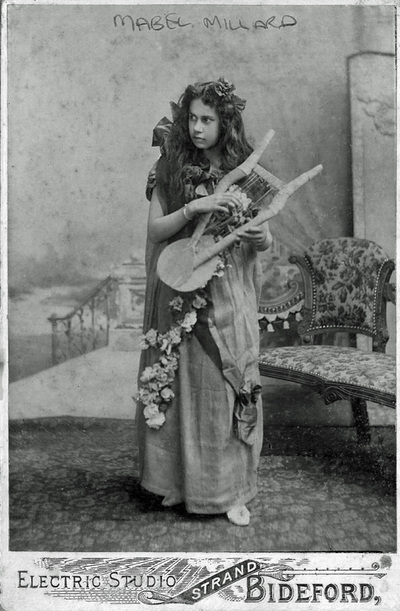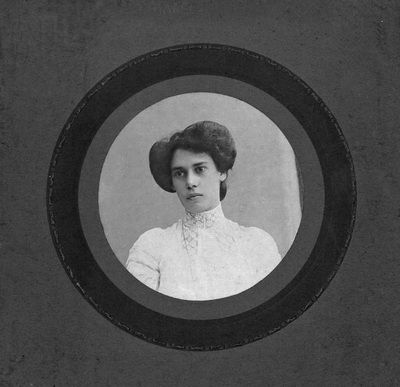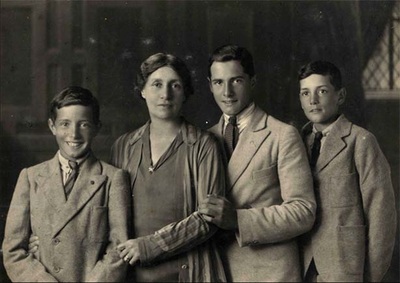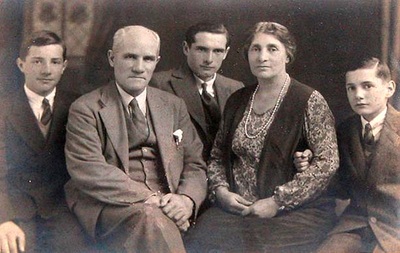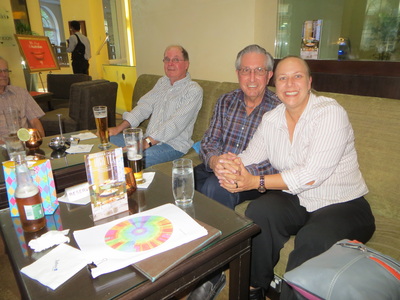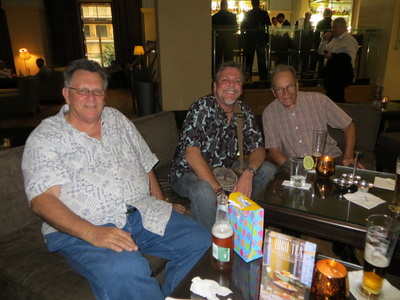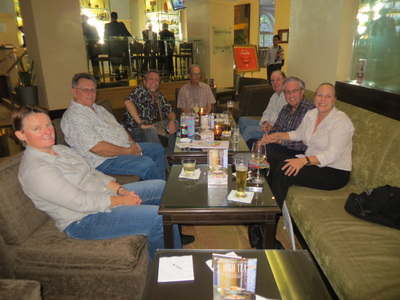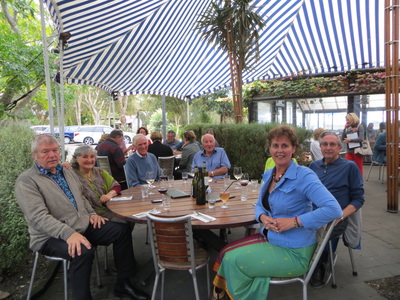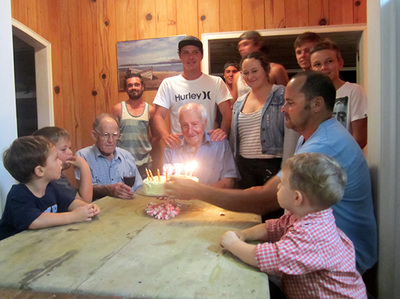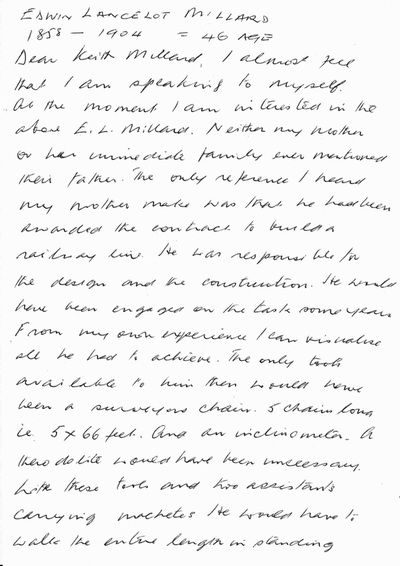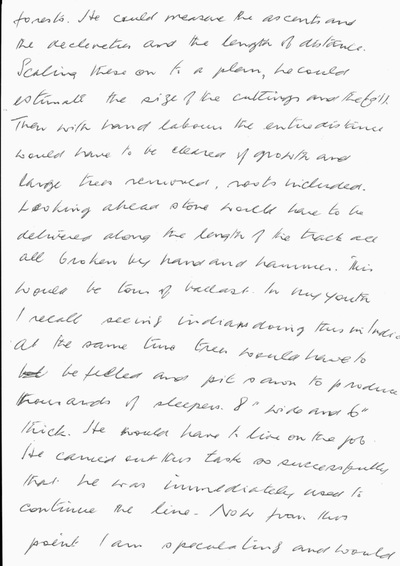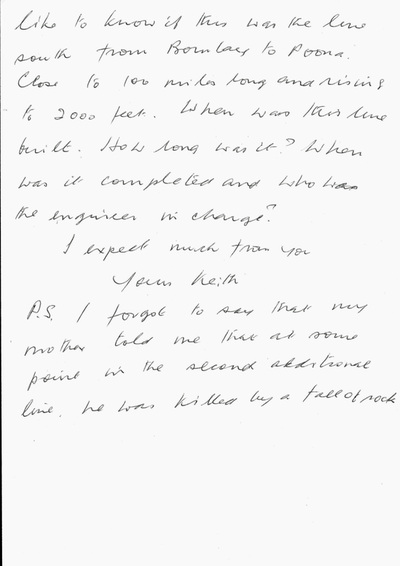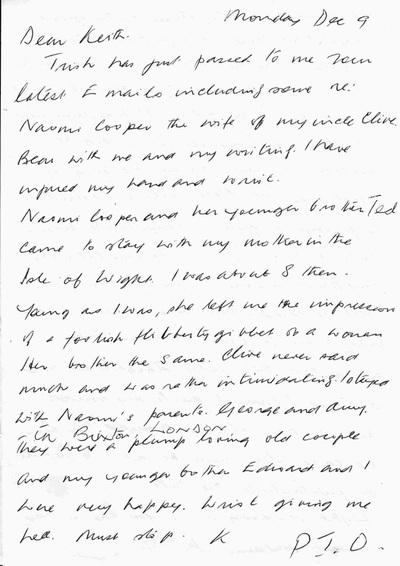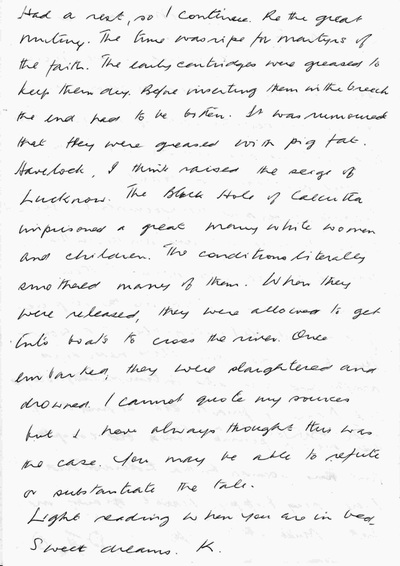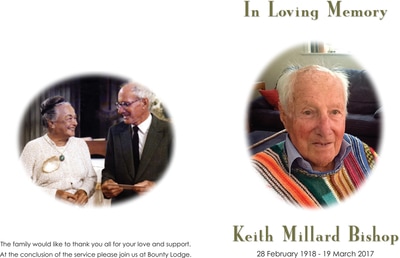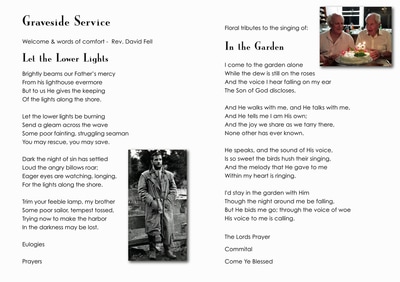Author: Keith Millard
Mapledurham & Richarde Millarde:
Richarde Millarde, DOB about 1625 in Mapledurham, Oxfordshire, England is the starting point in tracing the genealogy of several Millard and related family connections, and these touch on India, South Africa, Australia, and New Zealand!
There are a number of things that make Mapledurham unique in our genealogy research;
- This tiny isolated village likely never exceeded 100 to 150 inhabitants.
- It has existed for over 1,000 years.
- In medieval times, occupations often determined surnames; thus, the breadmaker became Baker, the blacksmith became Smith, and the man who owned or operated the mill became Millward or Miller.
- Mill owner or operator is the most common origin of the name Miller and Millard.
- Mapledurham was so small and isolated, it was a place to leave from, not to move to. When the oldest son inherited from his father, it was common for his siblings to seek their fortune and wives elsewhere. Basically, the majority of additions to the Mapledurham population would be the arrival of new brides and the arrival of children, most of whom left when they became adults.
- A law was passed requiring English church parishes to document and keep all records of christenings, marriages, and burials starting in 1600. Some larger parishes began doing this around 1550, smaller ones often didn't start until several decades into the 1600s. The parish records for Mapledurham begin in 1650.
- In the 1600s, many parish priests were barely literate and had only learned to read and write Latin. In addition, a different priest might write the entry for each of the three major events in life (christening, marriage, and burial). This, coupled with writing in script with flourishes, plus age and condition of 300 year old documents, presented many challenges to transcribers in the modern era. Thus, we see a wide disparity in recorded names within the same family.
The story (with photos) about the delightful village and mill of Mapledurham is located at Mapledurham, Oxfordshire.
Richarde Millarde has 291 descendants in our Geni Family Tree. For the purpose of this story we will only cover the birth of Richarde's son Thomas in 1662, his son James in 1698, his son James in 1726, and his son David Millard born in Bisham, Berkshire in 1769.
Click on photos to enlarge or cursor over for caption:
Mapledurham & Richarde Millarde:
Richarde Millarde, DOB about 1625 in Mapledurham, Oxfordshire, England is the starting point in tracing the genealogy of several Millard and related family connections, and these touch on India, South Africa, Australia, and New Zealand!
There are a number of things that make Mapledurham unique in our genealogy research;
- This tiny isolated village likely never exceeded 100 to 150 inhabitants.
- It has existed for over 1,000 years.
- In medieval times, occupations often determined surnames; thus, the breadmaker became Baker, the blacksmith became Smith, and the man who owned or operated the mill became Millward or Miller.
- Mill owner or operator is the most common origin of the name Miller and Millard.
- Mapledurham was so small and isolated, it was a place to leave from, not to move to. When the oldest son inherited from his father, it was common for his siblings to seek their fortune and wives elsewhere. Basically, the majority of additions to the Mapledurham population would be the arrival of new brides and the arrival of children, most of whom left when they became adults.
- A law was passed requiring English church parishes to document and keep all records of christenings, marriages, and burials starting in 1600. Some larger parishes began doing this around 1550, smaller ones often didn't start until several decades into the 1600s. The parish records for Mapledurham begin in 1650.
- In the 1600s, many parish priests were barely literate and had only learned to read and write Latin. In addition, a different priest might write the entry for each of the three major events in life (christening, marriage, and burial). This, coupled with writing in script with flourishes, plus age and condition of 300 year old documents, presented many challenges to transcribers in the modern era. Thus, we see a wide disparity in recorded names within the same family.
The story (with photos) about the delightful village and mill of Mapledurham is located at Mapledurham, Oxfordshire.
Richarde Millarde has 291 descendants in our Geni Family Tree. For the purpose of this story we will only cover the birth of Richarde's son Thomas in 1662, his son James in 1698, his son James in 1726, and his son David Millard born in Bisham, Berkshire in 1769.
Click on photos to enlarge or cursor over for caption:
The Thames River:
We would be very remiss if we didn't cover the enormous commercial importance of the Thames River. Though ocean going ships could only come upriver as far as London, the Thames beyond London was the primary commercial artery until such time as railways and highways came into being.
You cannot take the Thames with you. It has always been the river of commerce. The watercress-growers of Gravesend, the biscuit-bakers and store-shippers of Tooley Street, the ship-chandlers of Wapping, the block-makers and rope-makers of Limehouse, all owe their trades to the Thames.
At 215 miles, from the Cotswold Hills to the North Sea, the Thames is England’s longest river, and mile for mile has witnessed more than its share of epochal events. Julius Caesar crossed the river he called the “Tamesis”—from a Celtic root word meaning “dark”—in 54 B.C. On June 15, 1215, twenty-five barons forced King John to sign the Magna Carta at Runnymede, beside the Thames. Oxford University came into being on the river’s north bank. Conspirators gathered at Henley-on-Thames (now the site of the famous regatta) to plot the Glorious Revolution of 1688 that overthrew Catholic King James II and brought Protestant William and Mary to the throne. Dozens of kings and queens were born, lived and died along the river, at the castles of Hampton Court, Placentia and Windsor.
In the 1700’s, London existed between two distinct separate geographical areas; the City of London in the east, (as seen in the picture gallery following), which was the centre of commerce, and the City of Westminster in the west, which was the centre of government. Large ships could only come upriver as far as London, and all their cargo destined for points west travelled by barge and riverboat west from London; and the same was true for all goods coming downriver to London. A bridge was badly needed at Westminster and the first one was finally built in 1750.
A vast range of vessels also plied their trades upon the water. Barges and barks sailed beside chalk-boats; they were joined by cocks, or small work boats, by pikers, rush-boats, oyster-boats and ferry-boats, by whelk-boats and tide-boats. Most Londoners earned their living directly off the river, or by means of the goods which were transported along it. Documents of the fourteenth and fifteenth centuries reveal a host of Thames employees, from the 'conservators' who were in charge of river safety to the 'tide-men' whose work on embanking or building upon the river depended upon the state of the tide. There were boatmen and chalkmen, eelmen and baillies, gallymen or garthmen, ferriers and lightermen, hookers and mariners, petermen and palingmen, searchers and shipwrights, shoutmen and piledrivers, trinkers and water-bailiffs and watermen. There are recorded no fewer than forty-nine ways of trapping or catching fish, from nets and weirs to enclosures and wicker-baskets. But there were many other activities such as the erection of dams and barriers, the construction of landing-stages and jetties, the repairing of watergates and causeways, quays and stairs. We may call this the early stage of the Thames when it remained the living centre of the city's development and trade.
The Thames has also always been associated with song and music, beginning with the watermen's chant of 'Heare and how, rumblelow' or 'Row, the boat, Norman, row to thy lemen' dated respectively to the fourteenth and fifteenth centuries.
Click on photos to enlarge or cursor over for caption:
We would be very remiss if we didn't cover the enormous commercial importance of the Thames River. Though ocean going ships could only come upriver as far as London, the Thames beyond London was the primary commercial artery until such time as railways and highways came into being.
You cannot take the Thames with you. It has always been the river of commerce. The watercress-growers of Gravesend, the biscuit-bakers and store-shippers of Tooley Street, the ship-chandlers of Wapping, the block-makers and rope-makers of Limehouse, all owe their trades to the Thames.
At 215 miles, from the Cotswold Hills to the North Sea, the Thames is England’s longest river, and mile for mile has witnessed more than its share of epochal events. Julius Caesar crossed the river he called the “Tamesis”—from a Celtic root word meaning “dark”—in 54 B.C. On June 15, 1215, twenty-five barons forced King John to sign the Magna Carta at Runnymede, beside the Thames. Oxford University came into being on the river’s north bank. Conspirators gathered at Henley-on-Thames (now the site of the famous regatta) to plot the Glorious Revolution of 1688 that overthrew Catholic King James II and brought Protestant William and Mary to the throne. Dozens of kings and queens were born, lived and died along the river, at the castles of Hampton Court, Placentia and Windsor.
In the 1700’s, London existed between two distinct separate geographical areas; the City of London in the east, (as seen in the picture gallery following), which was the centre of commerce, and the City of Westminster in the west, which was the centre of government. Large ships could only come upriver as far as London, and all their cargo destined for points west travelled by barge and riverboat west from London; and the same was true for all goods coming downriver to London. A bridge was badly needed at Westminster and the first one was finally built in 1750.
A vast range of vessels also plied their trades upon the water. Barges and barks sailed beside chalk-boats; they were joined by cocks, or small work boats, by pikers, rush-boats, oyster-boats and ferry-boats, by whelk-boats and tide-boats. Most Londoners earned their living directly off the river, or by means of the goods which were transported along it. Documents of the fourteenth and fifteenth centuries reveal a host of Thames employees, from the 'conservators' who were in charge of river safety to the 'tide-men' whose work on embanking or building upon the river depended upon the state of the tide. There were boatmen and chalkmen, eelmen and baillies, gallymen or garthmen, ferriers and lightermen, hookers and mariners, petermen and palingmen, searchers and shipwrights, shoutmen and piledrivers, trinkers and water-bailiffs and watermen. There are recorded no fewer than forty-nine ways of trapping or catching fish, from nets and weirs to enclosures and wicker-baskets. But there were many other activities such as the erection of dams and barriers, the construction of landing-stages and jetties, the repairing of watergates and causeways, quays and stairs. We may call this the early stage of the Thames when it remained the living centre of the city's development and trade.
The Thames has also always been associated with song and music, beginning with the watermen's chant of 'Heare and how, rumblelow' or 'Row, the boat, Norman, row to thy lemen' dated respectively to the fourteenth and fifteenth centuries.
Click on photos to enlarge or cursor over for caption:
David & Sarah Millard family – Great Marlow, Buckinghamshire
These were the parents of (Sgt Maj) James Millard who as we now know served in the East India Company Bombay Army. David, born 1769, was the son of James and Winifred Millard of Bisham, Berkshire, also located on the river Thames 20 miles downstream from Mapledurham.
David married Sarah Gray in 1791 in the All Saints parish church at Great Marlow, Buckinghamshire, about 3 miles further downstream from Bisham, Berkshire. Sarah Gray was born in 1768 to Charles & Elizabeth Gray. Sarah had 4 siblings, 3 of whom died before the age of 1, and 1 brother who lived to the age of 8. No further record of Sarah can be found after the birth of son David in 1811. David died in Great Marlow in 1826, aged 56, which matches his Bisham birth date of 1769.
James was born to David & Sarah in 1806 in Great Marlow, Buckinghamshire, a town located on the river Thames about 50 miles upstream from London.
It is difficult for us to perceive what life was like around the start of the 19th century in England, obviously child mortality was extremely high. David and Sarah had 7 children, of whom 5 died at an early age. No post birth records can be found for Elizabeth, born 1802, or for David, born 1811. James was born to David & Sarah in 1806.
In summary, James Millard had one surviving brother 5 years his junior, a sister 3 years older, several sibling deaths, we don't know about his mother Sarah, and it is possible his father was ill for some time before his death in 1826 (James joined the EIC as a cadet in 1825).
Why did James decide to join the EIC, was it for adventure, or was it for a job away from the river? We don't know the reasons, but living by the river and watching all the commerce pass by destined for or coming from foreign ports must have just seemed full of possible adventures, and most of all, the Royal Military College was right there in town!
Click on photos to enlarge or cursor over for caption:
These were the parents of (Sgt Maj) James Millard who as we now know served in the East India Company Bombay Army. David, born 1769, was the son of James and Winifred Millard of Bisham, Berkshire, also located on the river Thames 20 miles downstream from Mapledurham.
David married Sarah Gray in 1791 in the All Saints parish church at Great Marlow, Buckinghamshire, about 3 miles further downstream from Bisham, Berkshire. Sarah Gray was born in 1768 to Charles & Elizabeth Gray. Sarah had 4 siblings, 3 of whom died before the age of 1, and 1 brother who lived to the age of 8. No further record of Sarah can be found after the birth of son David in 1811. David died in Great Marlow in 1826, aged 56, which matches his Bisham birth date of 1769.
James was born to David & Sarah in 1806 in Great Marlow, Buckinghamshire, a town located on the river Thames about 50 miles upstream from London.
It is difficult for us to perceive what life was like around the start of the 19th century in England, obviously child mortality was extremely high. David and Sarah had 7 children, of whom 5 died at an early age. No post birth records can be found for Elizabeth, born 1802, or for David, born 1811. James was born to David & Sarah in 1806.
In summary, James Millard had one surviving brother 5 years his junior, a sister 3 years older, several sibling deaths, we don't know about his mother Sarah, and it is possible his father was ill for some time before his death in 1826 (James joined the EIC as a cadet in 1825).
Why did James decide to join the EIC, was it for adventure, or was it for a job away from the river? We don't know the reasons, but living by the river and watching all the commerce pass by destined for or coming from foreign ports must have just seemed full of possible adventures, and most of all, the Royal Military College was right there in town!
Click on photos to enlarge or cursor over for caption:
Sgt Maj James Millard (1806 - 1881)
This analysis of James Millard, ancestor and relative to so many interesting people, is based on research of available records (census, birth, East India Company records, etc.) and some details may never be verified to a degree of absolute certainty.
What we do know is that James Millard joined the 4th Troop Brigade Horse Artillery in Buckingham in 1825, was attested as a Corporal in December of that year, and arrived in Bombay, India on the Duchess Atholl in June, 1826. He was a Sergeant in 1834, re-enlisted in 1837, was a Bombardier in 1839, and retired as a Sergeant Major in 1850 and returned to England via P & O at that time. Neither arrival in England nor departure records from England can be found for the 1849 – 1852 period, and the records may simply indicate his mustering out of the military service in 1850. We believe most of James' career took place at Pune, the main Indian fortress in the Bombay Presidency, though he also served at the Deesa fortress and in Byculla, in the city of Bombay.
We note that James voyage to India was on one of the newest and largest merchant ships of her time, the Duchess Atholl, built in 1821 and displacing 1,330 tons, and easily four times the size of most other merchantmen. The journey from London to Bombay around the Cape of Good Hope took eight weeks.
We will return to James' life story after a brief diversion to learn about the city of Pune and the British fort.
Pune, India (aka Poona and Poonah):
Poona (formerly known as Pune) is a city about 100 km south-east of Bombay (now Mumbai), which was a popular social retreat for residents of Bombay as well as formerly the largest garrison town in the Deccan for the East India Company Bombay Army. Poona was the headquarters of the Poona District in the Central division of the Bombay Presidency during the British period.
Poona grew under the Moguls from 1636 as a trade route. Its importance escalated after 1750 when it became the capital of the Marathá Empire, where the Peshwas had their palace. A battle for Poona in October 1802 between the Peshwa Bajirao II and the Holkars led to the 2nd Anglo-Maratha War. The British involvement in Poona began after the 1802 Treaty of Bassein - when Peshwā Bjī Rao allowed the English to station a small military force in the town. After the Peshwas were defeated at the Battle of Poona in 1817 between the British and the Marathas near Poona in the 3rd Maratha War the city was seized. It was placed under the administration of the East India Company Bombay Presidency. The British built a large military cantonment to the east of the city (still used by the Indian Army).
It is highly likely that nothing could prepare these young EIC Bombay Army recruits for what they found when they arrived in India. Indescribable heat, a culturally diverse population that outnumbered the young soldiers 1,000 to 1, a pervasive and overwhelming cacophony of sounds and smells (spices, unwashed bodies, decomposing vegetable and animal remains), a large Army settlement surrounded by a slum encampment of "camp followers" providing every imaginable commodity and service (laundry, servants of both sexes, valets, different foods, and yes, those other services as well). Many enlisted men could live out of barracks with their girlfriends, concubines, or newfound wives, and the encampment contained hordes of dogs and chickens and half naked children, and it is difficult to even imagine the total chaos.
At this time there were vastly more British men in India than there were British women (the Suez Canal did not yet exist) and it was the East India Company’s policy to encourage its soldiers to marry local women to promote social stability and to facilitate the assimilation of the cultures it controlled.
Click on photos to enlarge or cursor over for caption:
This analysis of James Millard, ancestor and relative to so many interesting people, is based on research of available records (census, birth, East India Company records, etc.) and some details may never be verified to a degree of absolute certainty.
What we do know is that James Millard joined the 4th Troop Brigade Horse Artillery in Buckingham in 1825, was attested as a Corporal in December of that year, and arrived in Bombay, India on the Duchess Atholl in June, 1826. He was a Sergeant in 1834, re-enlisted in 1837, was a Bombardier in 1839, and retired as a Sergeant Major in 1850 and returned to England via P & O at that time. Neither arrival in England nor departure records from England can be found for the 1849 – 1852 period, and the records may simply indicate his mustering out of the military service in 1850. We believe most of James' career took place at Pune, the main Indian fortress in the Bombay Presidency, though he also served at the Deesa fortress and in Byculla, in the city of Bombay.
We note that James voyage to India was on one of the newest and largest merchant ships of her time, the Duchess Atholl, built in 1821 and displacing 1,330 tons, and easily four times the size of most other merchantmen. The journey from London to Bombay around the Cape of Good Hope took eight weeks.
We will return to James' life story after a brief diversion to learn about the city of Pune and the British fort.
Pune, India (aka Poona and Poonah):
Poona (formerly known as Pune) is a city about 100 km south-east of Bombay (now Mumbai), which was a popular social retreat for residents of Bombay as well as formerly the largest garrison town in the Deccan for the East India Company Bombay Army. Poona was the headquarters of the Poona District in the Central division of the Bombay Presidency during the British period.
Poona grew under the Moguls from 1636 as a trade route. Its importance escalated after 1750 when it became the capital of the Marathá Empire, where the Peshwas had their palace. A battle for Poona in October 1802 between the Peshwa Bajirao II and the Holkars led to the 2nd Anglo-Maratha War. The British involvement in Poona began after the 1802 Treaty of Bassein - when Peshwā Bjī Rao allowed the English to station a small military force in the town. After the Peshwas were defeated at the Battle of Poona in 1817 between the British and the Marathas near Poona in the 3rd Maratha War the city was seized. It was placed under the administration of the East India Company Bombay Presidency. The British built a large military cantonment to the east of the city (still used by the Indian Army).
It is highly likely that nothing could prepare these young EIC Bombay Army recruits for what they found when they arrived in India. Indescribable heat, a culturally diverse population that outnumbered the young soldiers 1,000 to 1, a pervasive and overwhelming cacophony of sounds and smells (spices, unwashed bodies, decomposing vegetable and animal remains), a large Army settlement surrounded by a slum encampment of "camp followers" providing every imaginable commodity and service (laundry, servants of both sexes, valets, different foods, and yes, those other services as well). Many enlisted men could live out of barracks with their girlfriends, concubines, or newfound wives, and the encampment contained hordes of dogs and chickens and half naked children, and it is difficult to even imagine the total chaos.
At this time there were vastly more British men in India than there were British women (the Suez Canal did not yet exist) and it was the East India Company’s policy to encourage its soldiers to marry local women to promote social stability and to facilitate the assimilation of the cultures it controlled.
Click on photos to enlarge or cursor over for caption:
James Millard EIC Service;
We believe much or most of James Millard's EIC service was in Pune, though we can't be sure. In 1834 (aged 28) he is promoted from Corporal to Sergeant, and in 1839 (aged 33) he is retitled Bombardier. This could be a transcription error, as the rank of Bombardier (or gunner) was below that of Corporal. In any event, he musters out and in 1850 is awarded the pension of Sergeant Major. He may have had to return to England to complete the pension assignment. If he did, he returned soon thereafter because his child that died in infancy was born in January of 1851.
Eliza Julia Edwards;
One of the most interesting genealogy events was James marriage in 1845 to Eliza Julia Edwards. Records indicate Eliza was born to Mary Anne Glascott and Thomas Edwards in April 1830 at the British Fort in Ahmednagar, India. Her sister, Anna Harriet Emma was born in November 1831, just a few months after their father had died in an accident, and we will learn a little more about her later. Mary Anne remarried in 1832 to Patrick Donohoe, and records show a number of children born between 1835 and 1858, all births occurring at the British Fort locations of Poona and Deesa. Of great genealogical interest is that at birth Mary Anne's mother was recorded as an unidentified Eurasian woman.
Note: There are some among the 235 descendants of Mary Anne in our Geni Family Tree who are appalled at the thought of having Anglo-Indian genes. One descendant (who is not appalled) is Deirdre Savage who has undertaken to have genetic DNA tests carried out on a direct female descendant of Mary Anne Glascott, and a link will be added here when that report is published.
Link - Click on The mtDNA of a Mystery Ancestor and the Beginning of a Family in India
The James Millard and Eliza Edwards Millard Family;
In April 1845 Eliza Julia Edwards, aged 14 years and 11 months, marries James Millard, aged 38, at the British Fort in Deesa, India. Although perhaps shocking by today's standards, it was not uncommon at that time, and in fact Eliza's mother, Mary Anne, was 15 years old when she married Thomas Edwards. Note that James was either a Sergeant or a Sergeant Major at this time, and Eliza's stepfather, Patrick Donohoe, was a Sergeant Overseer for Public Works, and this is very likely how they met.
Note: From 1829 to 1901, Deesa was a British military Cantonment with a resident Catholic chaplain and a chapel. The British cantonment named Deesa Field Brigade was built in the middle of Rajasthan and Palanpur to maintain and protect the regions. This area was very desert like with temperatures approaching 45 C daily in summer.
Their son, James Edward Millard was born in Deesa in 1846, but Eliza Sarah (born 1848), Unnamed son (born and died 1851), Mary Henrietta (born 1852), and Edwin Havelock (born 1858) were all born in Bombay.
Wealthy Jewish philanthropist, David Sassoon, built and opened an Industrial and Reformatory Institution in Bombay for homeless boys in 1857, and James Millard was the first Superintendent of the facility. When Eliza died in 1864 at the age of 34, James was still the Superintendent.
James Millard died in Bombay in 1881at the age of 74.
Click on photos to enlarge or cursor over for caption:
We believe much or most of James Millard's EIC service was in Pune, though we can't be sure. In 1834 (aged 28) he is promoted from Corporal to Sergeant, and in 1839 (aged 33) he is retitled Bombardier. This could be a transcription error, as the rank of Bombardier (or gunner) was below that of Corporal. In any event, he musters out and in 1850 is awarded the pension of Sergeant Major. He may have had to return to England to complete the pension assignment. If he did, he returned soon thereafter because his child that died in infancy was born in January of 1851.
Eliza Julia Edwards;
One of the most interesting genealogy events was James marriage in 1845 to Eliza Julia Edwards. Records indicate Eliza was born to Mary Anne Glascott and Thomas Edwards in April 1830 at the British Fort in Ahmednagar, India. Her sister, Anna Harriet Emma was born in November 1831, just a few months after their father had died in an accident, and we will learn a little more about her later. Mary Anne remarried in 1832 to Patrick Donohoe, and records show a number of children born between 1835 and 1858, all births occurring at the British Fort locations of Poona and Deesa. Of great genealogical interest is that at birth Mary Anne's mother was recorded as an unidentified Eurasian woman.
Note: There are some among the 235 descendants of Mary Anne in our Geni Family Tree who are appalled at the thought of having Anglo-Indian genes. One descendant (who is not appalled) is Deirdre Savage who has undertaken to have genetic DNA tests carried out on a direct female descendant of Mary Anne Glascott, and a link will be added here when that report is published.
Link - Click on The mtDNA of a Mystery Ancestor and the Beginning of a Family in India
The James Millard and Eliza Edwards Millard Family;
In April 1845 Eliza Julia Edwards, aged 14 years and 11 months, marries James Millard, aged 38, at the British Fort in Deesa, India. Although perhaps shocking by today's standards, it was not uncommon at that time, and in fact Eliza's mother, Mary Anne, was 15 years old when she married Thomas Edwards. Note that James was either a Sergeant or a Sergeant Major at this time, and Eliza's stepfather, Patrick Donohoe, was a Sergeant Overseer for Public Works, and this is very likely how they met.
Note: From 1829 to 1901, Deesa was a British military Cantonment with a resident Catholic chaplain and a chapel. The British cantonment named Deesa Field Brigade was built in the middle of Rajasthan and Palanpur to maintain and protect the regions. This area was very desert like with temperatures approaching 45 C daily in summer.
Their son, James Edward Millard was born in Deesa in 1846, but Eliza Sarah (born 1848), Unnamed son (born and died 1851), Mary Henrietta (born 1852), and Edwin Havelock (born 1858) were all born in Bombay.
Wealthy Jewish philanthropist, David Sassoon, built and opened an Industrial and Reformatory Institution in Bombay for homeless boys in 1857, and James Millard was the first Superintendent of the facility. When Eliza died in 1864 at the age of 34, James was still the Superintendent.
James Millard died in Bombay in 1881at the age of 74.
Click on photos to enlarge or cursor over for caption:
Eliza Edwards Millard family connections;
William Vaudrey Glascott, the grandfather of Eliza Julia, has 263 descendants in our Geni Family Tree. These include her sister, Anna Harriett Emma (Anna Leonowens). Anna (26 November 1831–19 January 1915) claimed to have been an English travel writer, educator, and social activist. She claimed to have worked in Siam from 1862 to 1868, where she taught the wives and children of Mongkut, King of Siam. She also co-founded the Nova Scotia College of Art and Design. Leonowens's experiences in Siam were fictionalised in Margaret Landon's 1944 bestselling novel Anna and the King of Siam and in various films and television miniseries based on the book, most notably Rodgers and Hammerstein's 1951 hit musical The King and I.
A 7 generations descendant fan chart is included below, click on Download File to open it. Each generation is shown in a different colour. Pressing the Ctrl and + buttons will increase the size of the displayed file.
William Vaudrey Glascott, the grandfather of Eliza Julia, has 263 descendants in our Geni Family Tree. These include her sister, Anna Harriett Emma (Anna Leonowens). Anna (26 November 1831–19 January 1915) claimed to have been an English travel writer, educator, and social activist. She claimed to have worked in Siam from 1862 to 1868, where she taught the wives and children of Mongkut, King of Siam. She also co-founded the Nova Scotia College of Art and Design. Leonowens's experiences in Siam were fictionalised in Margaret Landon's 1944 bestselling novel Anna and the King of Siam and in various films and television miniseries based on the book, most notably Rodgers and Hammerstein's 1951 hit musical The King and I.
A 7 generations descendant fan chart is included below, click on Download File to open it. Each generation is shown in a different colour. Pressing the Ctrl and + buttons will increase the size of the displayed file.
| 1789_-_7_generations_of_william_vaudrey_glascott_descendants.pdf |
James and Eliza Edwards Millard family descendants;
Among the descendants of James and Eliza is their grandson, William Henry Pratt, better known by his stage name of Boris Karloff. His wives included Montana Laurena Williams (1920), Helen Vivian Soule (1924), and Dorothy Kelly (1930).
The numerous entities shown as Private in the fan chart attached are descendants (or the manager of their Geni Profile) who feel their privacy would be compromised if their names were shown.
A 6 generations descendant fan chart is included below, click on Download File to open it. Each generation is shown in a different colour. Pressing the Ctrl and + buttons will increase the size of the displayed file.
Among the descendants of James and Eliza is their grandson, William Henry Pratt, better known by his stage name of Boris Karloff. His wives included Montana Laurena Williams (1920), Helen Vivian Soule (1924), and Dorothy Kelly (1930).
The numerous entities shown as Private in the fan chart attached are descendants (or the manager of their Geni Profile) who feel their privacy would be compromised if their names were shown.
A 6 generations descendant fan chart is included below, click on Download File to open it. Each generation is shown in a different colour. Pressing the Ctrl and + buttons will increase the size of the displayed file.
| 1806_-_6_generations_of_james_millard_descendants.pdf |
Click on photos to enlarge or cursor over for caption:
Memories of James & Eliza Millard's Descendants:
This section of the family history will be for any descendants of friends to provide their own story, memories, and/or photos relating to the Millard family story. Each author will have their own Chapter and be shown as the author.
This section of the family history will be for any descendants of friends to provide their own story, memories, and/or photos relating to the Millard family story. Each author will have their own Chapter and be shown as the author.
Keith Millard;
I had the distinct pleasure to be contacted in 2012 by Sara Ann Millard, the third great granddaughter of James Millard. Sara had seen a James Millard from Buckinghamshire in one of my family trees and wondered if it was the "same" James Millard as her ancestor. We have had a warm and collegial relationship ever since, more like siblings that "adopted" cousins, and together have found a myriad of historical information about her own ancestors and cousins, as well as for the related Bishop and Savage families.
And it was my very good fortune to be able to actually meet with Sara Ann Millard, her brother Jason, her father David, her uncle Adrian, and my own biological 7th cousin Ralph Millard in Sydney, AU in spring 2014. Just a week later I was privileged to meet with Keith Millard Bishop (1st cousin of Sara, David, & Jason Millard) and his nephew Lindsey Bishop, as well as with Deirdre Ann Savage (3rd cousin of Keith Millard Bishop, and 4th cousin of Sara, David, and Jason Millard) in Napier, New Zealand. I have also received several remarkable letters from Keith Millard Bishop, 95 years old and living by himself on Norfolk Island, he loves to tell stories, and thoroughly reminded me of my own grandfather. Two of these letters are attached as pics of each page.
Click on photos to enlarge or cursor over for caption:
I had the distinct pleasure to be contacted in 2012 by Sara Ann Millard, the third great granddaughter of James Millard. Sara had seen a James Millard from Buckinghamshire in one of my family trees and wondered if it was the "same" James Millard as her ancestor. We have had a warm and collegial relationship ever since, more like siblings that "adopted" cousins, and together have found a myriad of historical information about her own ancestors and cousins, as well as for the related Bishop and Savage families.
And it was my very good fortune to be able to actually meet with Sara Ann Millard, her brother Jason, her father David, her uncle Adrian, and my own biological 7th cousin Ralph Millard in Sydney, AU in spring 2014. Just a week later I was privileged to meet with Keith Millard Bishop (1st cousin of Sara, David, & Jason Millard) and his nephew Lindsey Bishop, as well as with Deirdre Ann Savage (3rd cousin of Keith Millard Bishop, and 4th cousin of Sara, David, and Jason Millard) in Napier, New Zealand. I have also received several remarkable letters from Keith Millard Bishop, 95 years old and living by himself on Norfolk Island, he loves to tell stories, and thoroughly reminded me of my own grandfather. Two of these letters are attached as pics of each page.
Click on photos to enlarge or cursor over for caption:
Keith Millard Bishop passed away on March 19, 2017, just a short time after celebrating his 99th birthday. His daughter-in-law Patricia Magri wrote "Keith Millard Bishop slipped peacefully from this life today, with dignity and at home. His heart was full with the sweet memories of a very happy 99th birthday celebrated on February 28 - made even more special because he shared it with his nephew, Chips, visiting from the UK for four days".
Hover over photos for caption, click to enlarge:
Story Link - Click on Origins and Story of Sgt Maj James Millard (1806 - 1881) in India
